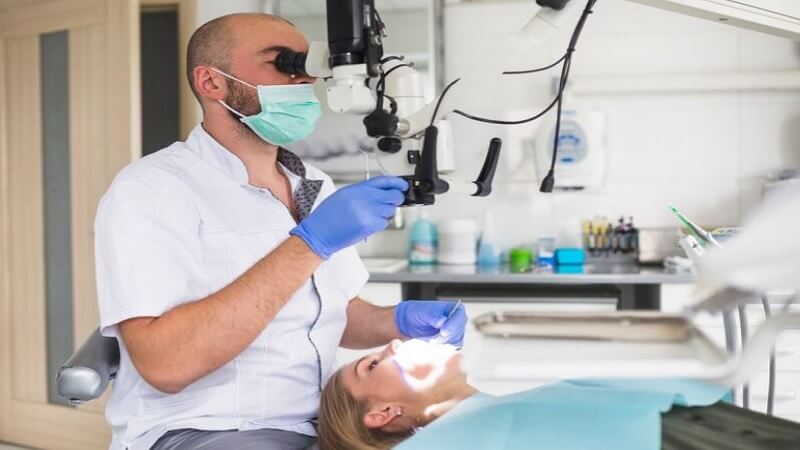In the realm of dentistry, where the health and well-being of patients are paramount, infection control stands as a critical pillar. It’s a comprehensive effort that encompasses various strategies and protocols to prevent the transmission of infections within dental practices. This article delves into the meticulous measures dental clinics, such as https://temeculafacialoralsurgery.com, adopt to ensure your safety during every visit, highlighting the unwavering commitment of dental professionals to patient care.
The Bedrock of Sterility: Standard Precautions in Dentistry
At the heart of infection control lies a set of standard precautions. These are the minimum infection prevention practices applied to all patient care, regardless of the suspected or confirmed infection status of the patient.
Rigorous Sterilization of Instruments
- Autoclaving: The most reliable method of sterilizing dental instruments, autoclaving uses steam under pressure to eliminate all forms of microbial life.
- Disinfection: For items that cannot withstand high temperatures, high-level disinfectants provide a safe alternative.
Protective Barriers
Disposable covers and barriers are used on surfaces and equipment that are difficult to sterilize but come into contact with patients or potentially infectious materials.
Personal Protective Equipment (PPE)
Dental professionals wear PPE—such as gloves, masks, eyewear, and gowns—to protect themselves and their patients from the transmission of infectious agents.
Fun Fact
The principle of sterilization in healthcare was pioneered by Louis Pasteur, the father of microbiology, who demonstrated that microorganisms cause disease and that their elimination prevents infection.
Air and Surface: A Dual Focus on Cleanliness
The dental office’s environment plays a significant role in infection control, necessitating a dual focus on both air and surface cleanliness, according to cleaner vibe, plano, tx experts.
High-Efficiency Air Filtration
Advanced air filtration systems, including HEPA filters and UV light purifiers, are employed to remove and neutralize airborne pathogens, ensuring the air you breathe during your visit is clean.
Continuous Surface Disinfection
Surfaces in the dental office, especially high-touch areas like door handles and dental chairs, are regularly cleaned and disinfected with hospital-grade solutions to eliminate potential contaminants.
Fun Fact
HEPA filters, capable of trapping 99.97% of particles that are 0.3 microns in diameter, were initially developed in the 1940s as part of the Manhattan Project to prevent the spread of airborne radioactive contaminants.
Beyond the Basics: Advanced Technologies in Infection Prevention
In the quest to further enhance patient safety, dentistry has embraced several advanced technologies, integrating them into daily practice to bolster infection control efforts.
Antimicrobial Coatings
Some clinics use antimicrobial coatings on surfaces and equipment, providing an additional layer of protection by inhibiting the growth of bacteria, viruses, and fungi.
Digital Dentistry
The adoption of digital tools, such as digital x-rays and intraoral scanners, reduces the need for physical impressions and films, thereby minimizing the risk of cross-contamination.
Sterilization Monitoring
Regular biological monitoring tests, including spore tests, ensure the effectiveness of sterilization equipment, offering tangible proof that sterilization protocols are being strictly adhered to.
Fun Fact
The use of digital impressions in dentistry not only enhances infection control but also significantly improves patient comfort by eliminating the need for traditional impression materials, which can be unpleasant and trigger gag reflexes.
Education and Communication: Empowering Patients and Staff
A well-informed dental team and patient community are crucial components of effective infection control. Ongoing education on best practices and open communication about safety protocols play key roles in maintaining a safe dental care environment.
Continuous Professional Development
Dental professionals regularly participate in training programs to stay updated on the latest infection control standards and technologies.
Patient Engagement
Clinics often provide informational materials and discussions to patients about the measures in place to protect their health, reinforcing the shared responsibility in maintaining a safe care environment.
Fun Fact
The concept of dental hygiene has been recognized for centuries, with the first toothbrush dating back to 1498 in China. Today, maintaining oral health and a clean dental environment continues to be a collaborative effort between dental professionals and patients.
Infection control in dentistry is a multifaceted and dynamic field, constantly evolving with advancements in science and technology. By adhering to stringent sterilization protocols, utilizing advanced cleaning technologies, and fostering an environment of continuous learning and patient education, dental clinics ensure that patient safety remains at the forefront of their practice. As you step into a dental office, rest assured that behind every smile and greeting lies a deep commitment to keeping you safe during your visit, safeguarding not just your oral health but your overall well-being.
